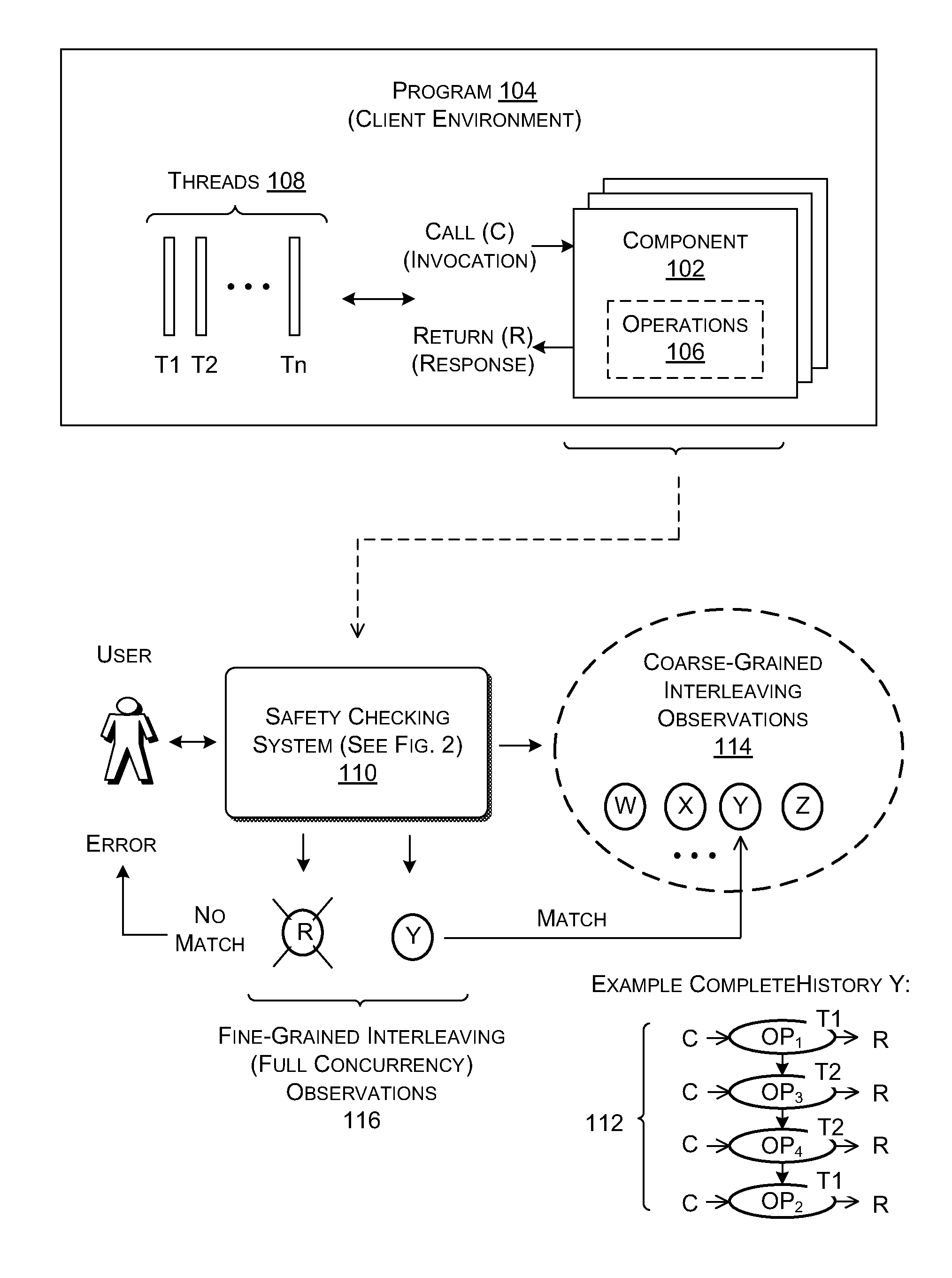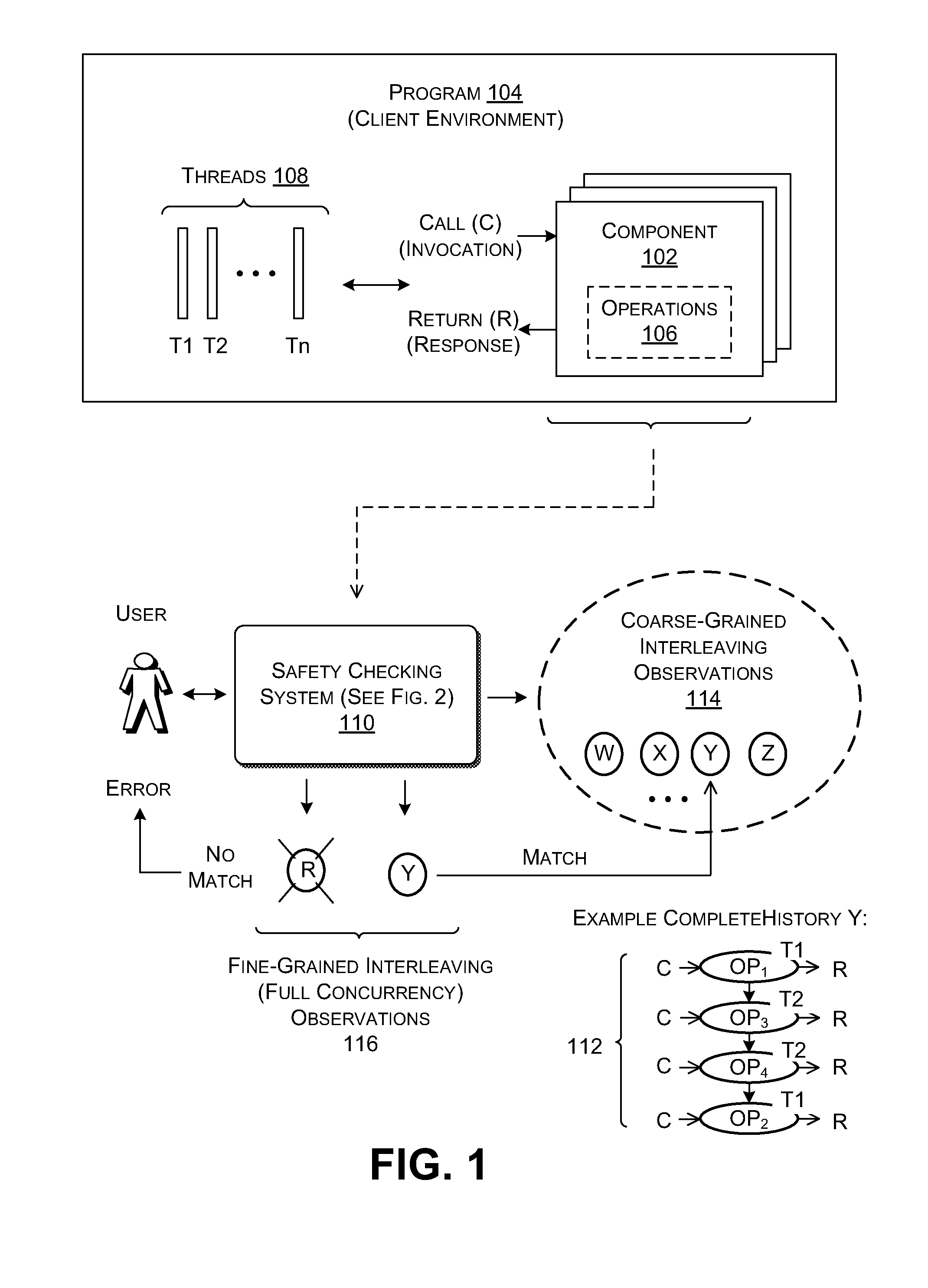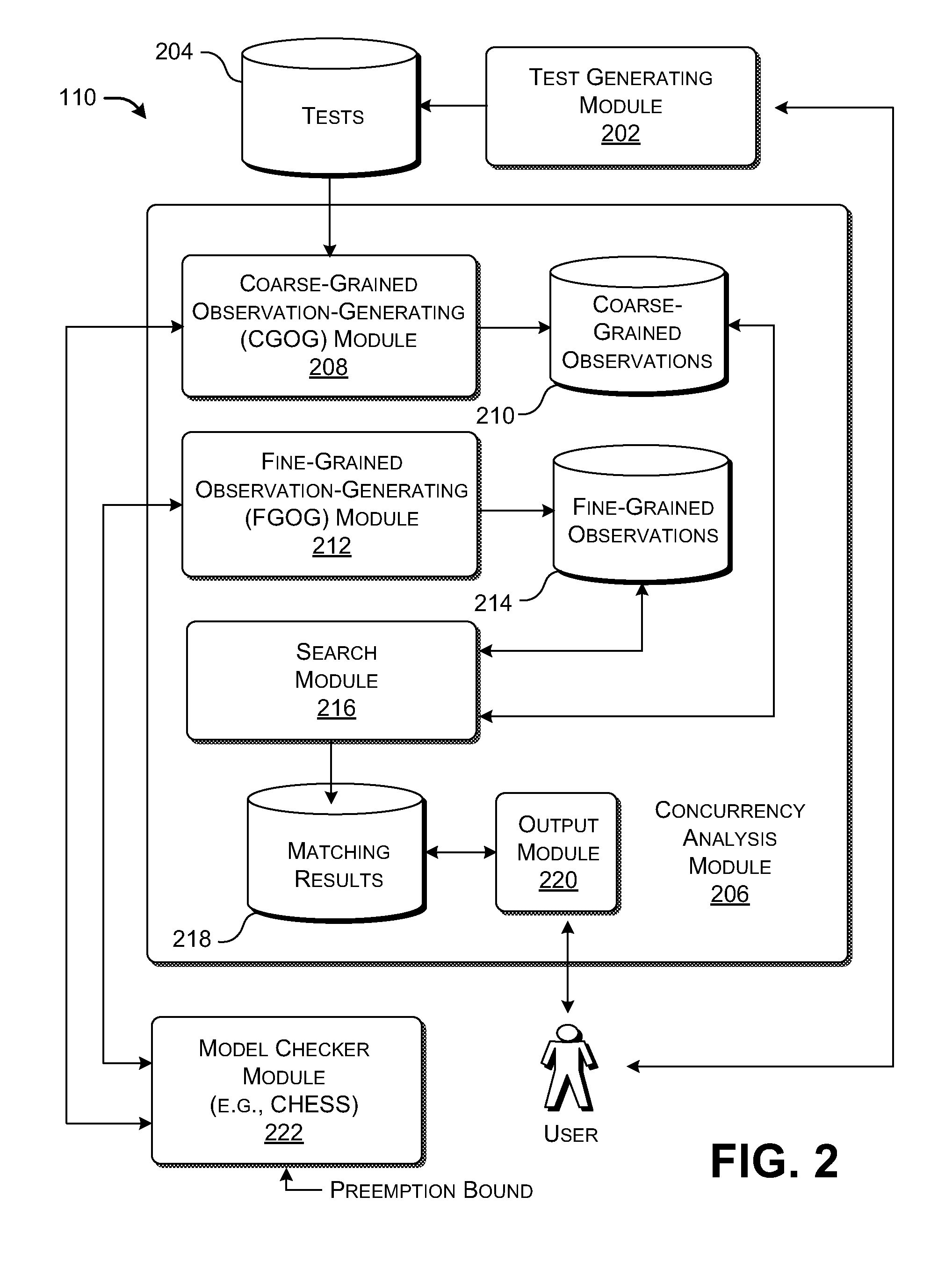Testing Components for Thread Safety
- Summary
- Abstract
- Description
- Claims
- Application Information
AI Technical Summary
Benefits of technology
Problems solved by technology
Method used
Image
Examples
Embodiment Construction
This disclosure is organized as follows. Section A describes an illustrative safety checking system for determining whether a component exhibits the property of linearizability (described below), and is therefore regarded as thread safe. Section B describes illustrative methods which explain the operation of the safety checking system. Section C describes illustrative processing functionality that can be used to implement any aspect of the features described in Sections A and B.
As a preliminary matter, some of the figures describe concepts in the context of one or more structural components, variously referred to as functionality, modules, features, elements, etc. The various components shown in the figures can be implemented in any manner. In one case, the illustrated separation of various components in the figures into distinct units may reflect the use of corresponding distinct components in an actual implementation. Alternatively, or in addition, any single component illustrated...
PUM
 Login to View More
Login to View More Abstract
Description
Claims
Application Information
 Login to View More
Login to View More - R&D
- Intellectual Property
- Life Sciences
- Materials
- Tech Scout
- Unparalleled Data Quality
- Higher Quality Content
- 60% Fewer Hallucinations
Browse by: Latest US Patents, China's latest patents, Technical Efficacy Thesaurus, Application Domain, Technology Topic, Popular Technical Reports.
© 2025 PatSnap. All rights reserved.Legal|Privacy policy|Modern Slavery Act Transparency Statement|Sitemap|About US| Contact US: help@patsnap.com



